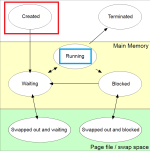- Jul 3, 2015
- 8,153
I have been using the free version of spyshelter, and due to the many pop-ups, which come every time a new program started or updated, I was under the impression that it was an anti-executable.
But then I saw on their site that anti-executable is a feature of the paid version.
Can someone explain to me the difference between the HIPS of the free version and the anti-executable of the paid version?
By the way, is this whole thing useful for non-experts?
I mean, I can usually identify what program is trying to run, and if I can't, I can always google it.
But I wouldn't notice, for instance, if some obscure windows process is not located in the right folder, and whether it is exploitable or not. So maybe I am wasting my time with this whole thing?
But then I saw on their site that anti-executable is a feature of the paid version.
Can someone explain to me the difference between the HIPS of the free version and the anti-executable of the paid version?
By the way, is this whole thing useful for non-experts?
I mean, I can usually identify what program is trying to run, and if I can't, I can always google it.
But I wouldn't notice, for instance, if some obscure windows process is not located in the right folder, and whether it is exploitable or not. So maybe I am wasting my time with this whole thing?



